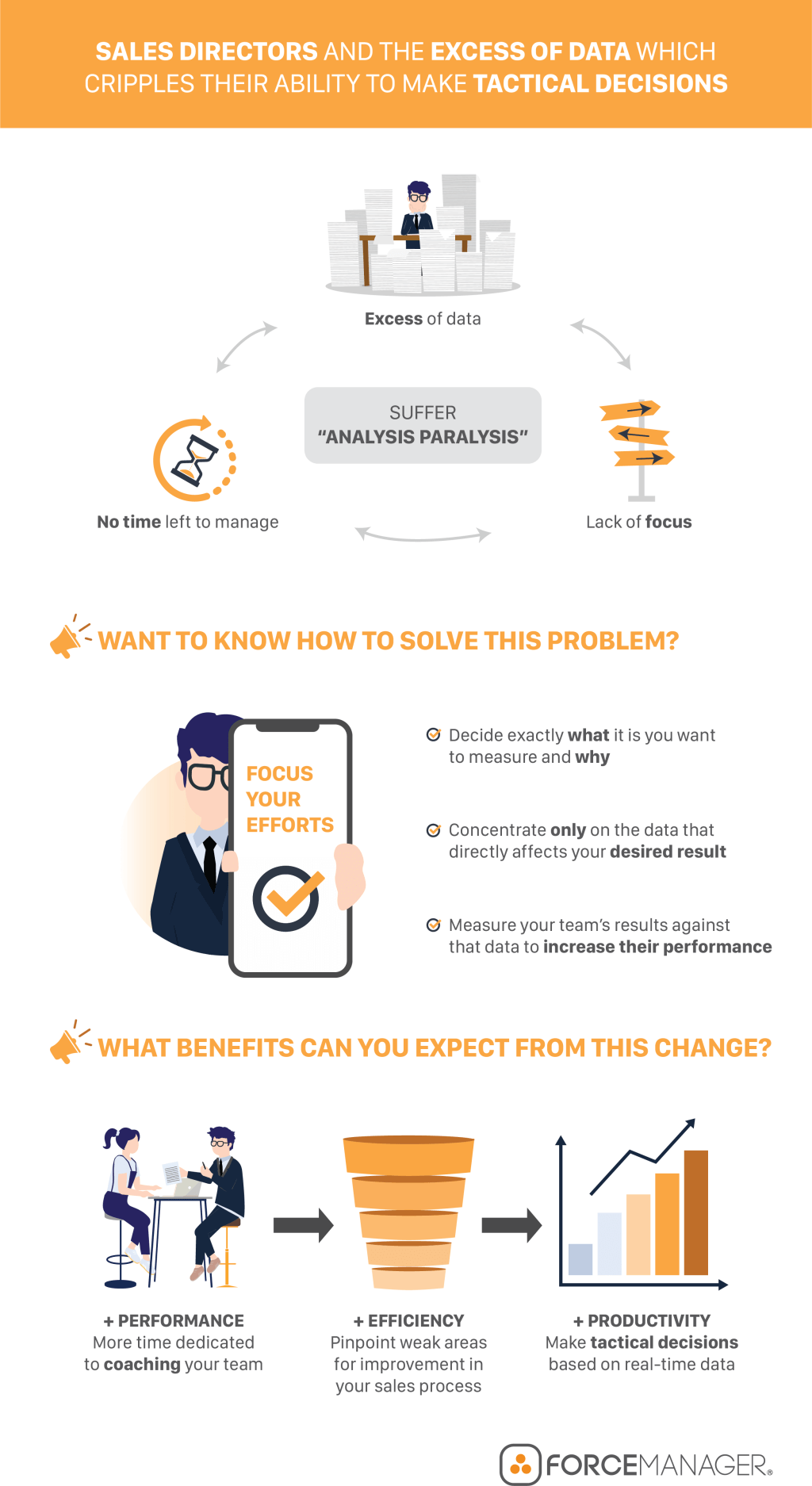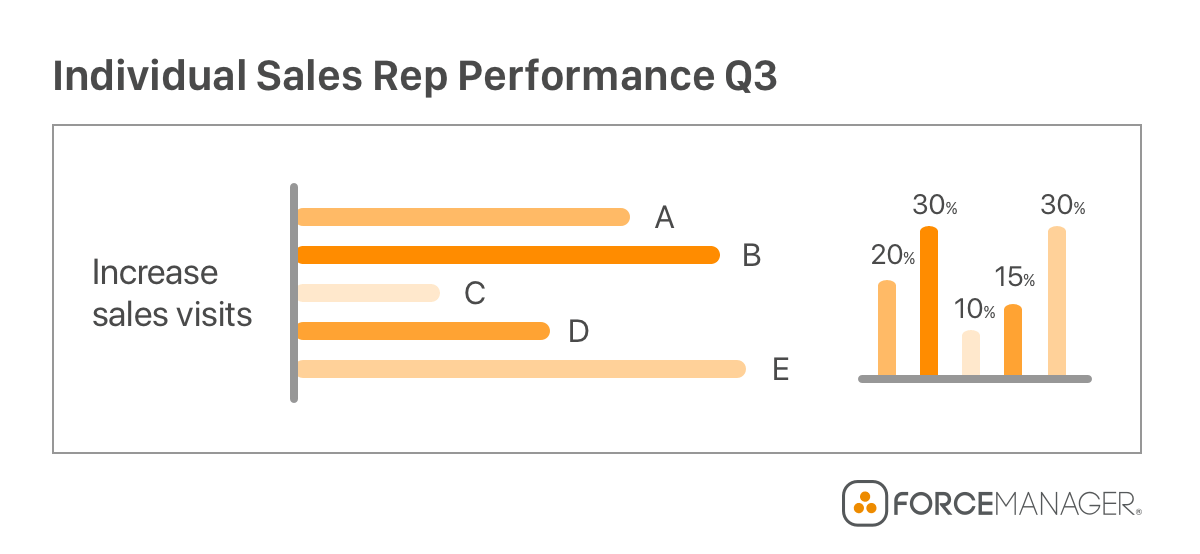Product
Features
column
column
Add-ons
Integrate
Customers
By Industry
By Role
Success Stories
column
column
Pricing
Resources
Product Support
Education Resources
section
6 min read
With a set of business objectives in mind and a sales strategy plan in place to achieve them, it’s time to put theory into practice and look at sales strategy execution.
So, what is sales strategy execution?
Sales strategy execution is about understanding how to fulfill boardroom objectives through individual sales rep action in the field.
Now, it’s common to hear about execution through the art of selling. An idea that top-performing sales reps are innately gifted. They are born with a natural talent that can not be replicated, but simply admired.
However, experience tells us there’s often far more science behind executing winning sales strategy formulas.
This isn’t to say successful sales teams are devoid of passion (or star sales performers, for that matter), just they are driven by data, knowledge, and close alignment with corporate objectives, rather than gut feeling.
Therefore this data-driven, 4-step plan for effective sales strategy execution focuses on:
Did you know, less than a third of newly implemented sales strategies are successful?
A lack of internal communication, misalignment between corporate and sales objectives, and resistance to change are commonly to blame.
Many executive teams are wary of tampering with a delicate sales process. They believe their “champion performers” should be left to their own devices, pulling in revenue as they see fit.
Any change to the status quo only serves to upset the balance of the sales team and makes things worse.
However, no matter how skilled the sales team is, if left unguided, any alignment plans management has with corporate objectives go out the window.
Salespeople aren’t always privy to other senior executive concerns. Yes, revenue is arguably at the top of that list, but so too are marketing positioning, maturity, and brand perception.
Let’s take a look at a quick example.
Your senior committee makes a strategic decision to increase overall market share. They believe that without it, the future of the company is at risk.
As a sales director, you decide the most effective way to achieve this is by expanding into new, previously unexplored territories.
Your sales team, on the other hand, left to their own devices continues to hit target revenue as prescribed.
The problem is, they acquire the majority of this revenue from customers from an existing market.
Through a lack of either:
The overall objective of expanding into new territories is missed, despite reps “hitting” target revenue.
That’s why effective sales strategy execution begins with a conversation. Sales management, their team, and any other affected parties (marketing, product development, manufacturing, etc.) discuss the need for change, and the processes put in place to achieve it.
It’s an incredibly simple yet vital process that must take place before moving forward, especially with a B2B sales strategy plan.
Alignment is King when it comes to sales plan execution.
The next step of the sales execution strategy process is setting SMART sales goals.
Now the objective with setting goals here is twofold:
And as we just highlighted, alignment is King in this game!
The SMART principle comes highly recommended as it ensures all sales goals are:
SPECIFIC
MEASURABLE
ACHIEVABLE
RELEVANT
TIME-SENSITIVE
The greater granularity you can provide your salespeople with their goals, the likelier they are to achieve them.
If you want them to increase market share, explain which territories, give a specific as to how much, and why. Having a real figure to aim it makes a big difference to frontline sales reps.
“What can’t be measured, can’t be improved,” or so goes the expression.
To evaluate the success of your team’s progress, you need to set them quantitative goals. If not, how are you to determine if they are on the right path? And if that’s the case, which areas need improving the most?
Accurate, real-time weekly sales reports come in handy when evaluating your team’s goals.
The idea of sales goals is to motivate your reps into hitting a particular target. Push the goalposts too far out, however, and it can have the opposite effect, demoralizing your team.
Try to find a sweet spot between ambition and what’s realistic to get the most from your team.
As we’ve discussed already, sales goals must be closely tied to corporate objectives if we want to execute the companies long-term vision.
If not, then its future success and longevity are put at risk.
Let’s go back to the previous example of increasing market share.
Our corporate team tasked us with increasing market share by 20% by the end of the year.
As sales managers, we conclude that the most cost-effective go-to-market strategy for achieving that goal is to improve Share of Wallet. There are two ways to do this:
The most tried and tested method for measuring customer retention is The Wallet Allocation Rule, where a customer ranks your brand amongst competitors using a sliding numerical scale.
Therefore, a relevant sales objective for individual reps would be to increase rank along this scale.

This can be achieved by spending more face-to-face time with clients, uncovering deeper customer needs, etc.
The final part of the SMART principle determines sales goals must have an en expiration date. If not, where’s the sense of urgency needed to achieve them?
Once the sales goals are in place, the second step in the sales strategy execution plan is to start tracking and measuring their progress.
We can do this by setting up custom sales manager reports within our CRM. This allows us to gather enough data that we can (in stage four) later apply to our sales coaching model.
However, before we do that, we must determine what we want to measure and, more importantly, why.
If not, we could suffer from a common affliction to affect almost all sales managers throughout their careers – analysis paralysis.
This is essentially an overload of information that cripples a field director’s ability to extract any real, actionable insights from their reports.

In our particular case, we know our field rep’s goal is to increase customer loyalty ranking position.
Therefore, the sales activity we measure in our reports needs to affect this goal in some way.
One of the activities we highlighted in step two as having a direct relation to loyalty ranking, was face-to-face visits. It would make sense that the more time a customer spends with a salesperson, the stronger the relationship.
So let’s see what a mock weekly report might look like for us:

As you can see, we are looking at the number of sales visits made by 5 of our field reps from the past week:
While we have no particularly outstanding performers, sales reps C and D do raise a red flag. They have reached only 10% and 15% of their assigned targets.
It’s unlikely the team hits their overall targets if these two continue to fall so far short of their face-to-face visit quota.
Clearly, something needs to be done about it.
However, before directly approaching the pair, please take a few minutes to think of all the skills a sales rep needs to hit this particular goal, and perhaps some of the obstacles they face.
Off the top of my head, some of the likely reasons are:
Once you’ve completed this quick exercise and identified a few potential problem areas, it’s now time to move onto the fourth and final step in the sales execution strategy plan, coaching.
The final stage of the execution plan is arguably where we, the sales director, earns their keep.
Combining our experience with a targeted, data-driven report, we can step in and provide our team with advice and support.
Now I do have a recommended method for approaching the subject. It can, as I’m sure you’ve experienced before, get quite tricky when critiquing a salesperson’s performance.
It starts by organizing a weekly sales meeting, which typically lasts between 30 minutes to an hour, to resolve issues or obstacles preventing salespeople from hitting their goals.
Before you begin offering any advice during the meeting, ask for feedback from the individual sales rep in question. It is crucial in stopping sales reps from immediately going on the defensive.
For example, try opening the conversation like so:
“Hey sales rep C/D, generally speaking, how would you rate your overall performance over the past couple of weeks?”
“Let’s take a look at your weekly sales reports and the number of face-to-face visits made compared to the rest of the team…what is your opinion?
This approach empowers salespeople to reflect on their performance. It allows them to question why they’ve underperformed and uncover their weak points.
Then, after a quick discussion, you can continue with the following question:
“So, based on your observations and the metrics we’ve gone through together in your report, which skills do you think we should work?
Once this process is completed, you can then step in with your own opinion and form an appropriate sales coaching plan for the future.
Here’s a potential problem scenario and corresponding coaching plan for sales reps C and D:
Time Management – It’s probable that, after your weekly sales meeting, you uncovered the reason for their poor performance stems from a lack of time management. Depending on the field rep, it could be that:
Whatever the reason might be, you can set out a “daily scrum” where they commit to completing a set of actions every day against the new objectives outlined in their sales coaching plan.
Both salespeople and managers then track these daily/weekly goals or KPIs to boost performance.
Then, with a bit of luck, the weekly sale reports will start looking like this:

In conclusion, sales leaders wanting to drive successful sales strategy execution start by demonstrating to management the need for change, and their vision for achieving it. After a concept is agreed upon, it’s down to leaders align sales goals with corporate objectives, access accurate, real-time reports to help implement a sales coaching plan for individual reps on the ground.
Get all this right, and I promise you, the rewards will be substantial!